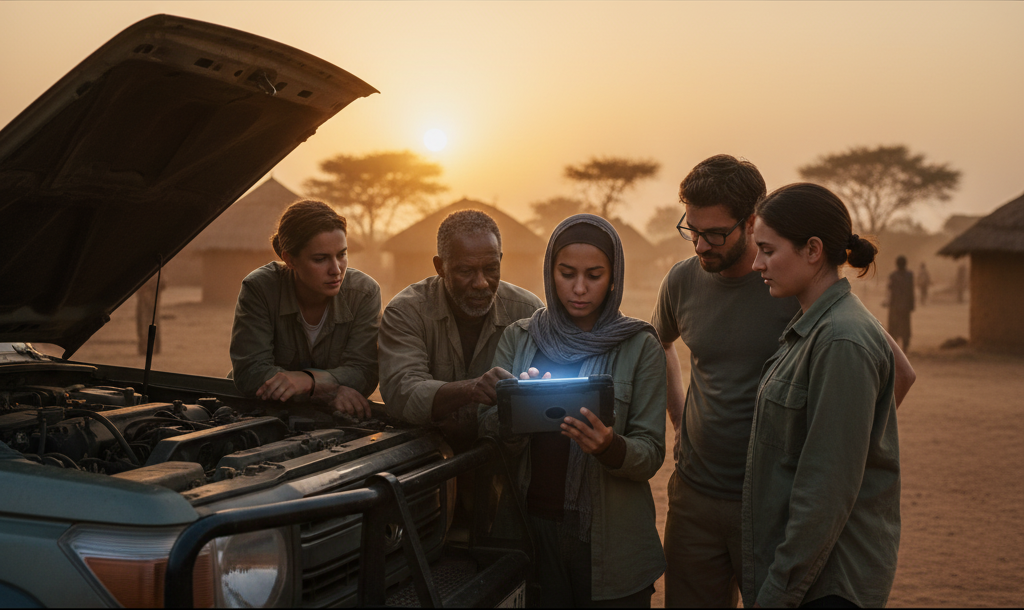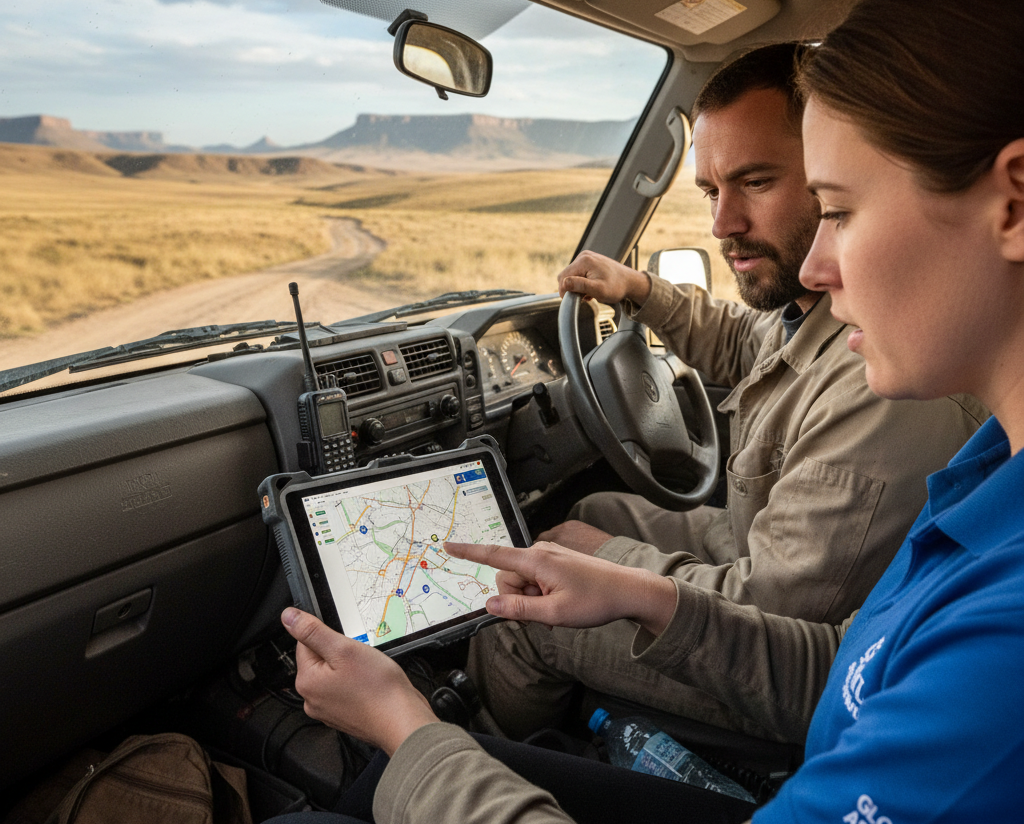For aid workers, posted families, business travellers, and anyone working across borders or in complex environments
You land in Kigali. Maybe it is a stopover in Doha, or you are travelling between Rwanda’s capital and the DRC border. Your local SIM is weakening. The Wi-Fi is unreliable. You need to send a message, download a location file, or tether your phone to your laptop and send the emails you drafted offline.
Instead, you are tired from overnight travel, rummaging through pouches, trying to find a SIM adapter that has slipped to the bottom of your bag. The hotel Wi-Fi is not loading, and your local data is not connecting. You are online enough to see that you are offline.
This is the kind of moment when an eSIM is useful.
What is an eSIM?
An eSIM is a digital version of the traditional SIM card. Rather than inserting a small plastic chip into your device, you install a mobile data profile through a QR code or app. It works directly from your phone or tablet’s settings. No need to queue at kiosks, flash your passport, or carry spare SIM cards.
You can preload an eSIM before travel and activate it when needed. It can sit alongside your main SIM if your device supports dual SIMs, meaning you can stay reachable on your usual number while using the eSIM for data.
This is especially helpful when working across countries or where local infrastructure is unreliable or restricted.

Where it helps
These are the moments when an eSIM makes a real difference:
- On Arrival, In Transit, and During Stopovers
You touch down in Nairobi, Istanbul or Phnom Penh. You are tired and just want to check in with your team or family. With an eSIM, you are online the moment your phone regains signal. No more queuing for a kiosk, fumbling with a SIM tool, or swapping numbers mid-journey.
- In Border Zones or Patchy Network Areas
In places where local networks are weak or restricted, eSIMs can offer access through neighbouring country networks. We have worked in places where the only viable signal comes from a cross-border tower. We have boosted signal at static sites and identified strong coverage spots during mobile operations.
- When One Network Fails
Sometimes it is a technical issue. Sometimes access is deliberately cut. eSIMs often connect to multiple providers, giving you the option to switch without replacing hardware or visiting a shop.
- For Teams, Families and Field Staff
eSIMs are useful for teams in transit, mobile clinics, or posted families. They can be installed in advance, sent by email, and managed centrally. Whether it is a researcher on assignment, a family member arriving late, or a colleague stuck at a border, eSIMs offer flexibility.
- For Tablets and Non-Phone Devices
Many newer tablets also support eSIMs, allowing for easier access to files, platforms, and communication tools. This is particularly useful for those presenting, mapping, or analysing on the move.
- As a Primary or Backup Option
For those regularly moving through multiple countries, an eSIM can be the primary option. For others, it provides a reliable fallback. It can be used alongside a local SIM, with the eSIM configured for international data and the local SIM used for in-country voice or SMS if required.

How do eSIMs work?
Global eSIM providers purchase access from telecom companies across multiple countries. This allows them to offer regional or global packages through a single eSIM profile. Once installed, your device will search for signal from the strongest available partner provider.
You are not locked into a single national network. You can download a regional or country-specific plan, switch providers if needed, or top up as you go. There is no physical installation, and activation usually takes less than five minutes.
However, eSIMs are for data. They do not come with a phone number, so you cannot send or receive SMS or make traditional calls. Most users rely on messaging and call apps like Signal, WhatsApp, or Microsoft Teams, which function normally over data.
Important Considerations
An eSIM is not a replacement for all comms. It is not a secure line, and it does not protect your phone from being tracked or compromised. As with any data service, it is best used in conjunction with a trusted VPN. It is also important to stay familiar with other forms of communication. No tool is perfect, and reliance on any one platform can leave you vulnerable when systems fail or networks are restricted.
Final Thought
We recommend that organisations treat eSIMs as essential. We have spoken with colleagues whose organisations still do not cover eSIMs or VPNs. These are no longer optional extras. They are baseline tools that should be available to all staff and eligible for expense or issue. A short delay in activation or signal can have consequences far greater than the cost of provision.
For anyone operating in cross-border, low-connectivity or sensitive environments, the ability to connect, send a message, or reach a map link when nothing else works can be the difference between safe movement and standing still.
If you would like support identifying a reliable eSIM provider or advice on signal boosting techniques, get in touch.







